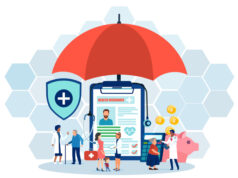Every year at this time, it feels like the movie Groundhog’s Day for many in the payer community. New members, that can run into the tens of thousands, are onboarded. For those in care management, it’s a mad scramble to obtain patient medical histories. The amount of time, energy, and resources spent on largely manual processes continues to be exasperating.
Take Medicare, for example, where more than 840,000 baby boomers aged into the system and enrolled between 2019 and 2020. When these new members are onboarded, care management teams have a very challenging time attempting to close gaps in care. Common questions such as, “when was the last time a member had a mammogram, and what were those results?” are often difficult to answer because of healthcare’s infamous data silos that ensure patient information remains trapped.
Chronic fatigue syndrome
Payers employ teams of people whose full-time job is calling a doctor’s office, requesting information, and waiting weeks for the data to be mailed in hard copy or other physical media such as CDs —or being required to physically drive to the provider location to pick up records. The onus of collecting patient records doesn’t stop with care management.
During reporting periods for HEDIS/STARS measures or risk adjustment evaluations to set rates for plans, administrative teams must chase down records. This Herculean task often requires extra help from outside firms during the January to April crunch time. Many providers find multiple people from multiple departments from the same payer organization requesting the same type of information over and over again in a single year. The result is extraordinary expense and unnecessary fatigue in a records collection process that repeats itself every year.
Interoperability struggles
2020 was supposed to be The Year that would kick health data interoperability into high gear. The Office of the National Coordinator for Health IT (ONC) and the Centers for Medicare and Medicaid (CMS) issued their highly anticipated rules that are intended to improve data interoperability and to prevent information blocking. The rules specify the interoperable data and technology standards for sharing medical records between patients, doctors and payers. The goals are to give patients greater access and control over their medical information to make better healthcare decisions and to spur the type of consumer innovation that is seen in almost every other industry except healthcare.
Those rules have been delayed twice due to difficulties with payers and providers implementing the standards; and then there was also the pandemic. While it remains to be seen if April 2021 will indeed be the effective date for compliance, and many companies are actively advocating for additional delays, one thing we do know is that neither payers nor providers are completely ready for it.
According to a recent survey by Accenture, fewer than one in five (18%) of the executives surveyed in key leadership positions at U.S. healthcare companies said they are “very familiar” with the new regulations, while 17% said they are completely unaware of it. In another survey by the eHealth Initiative, 64% of payers said their top concern is their ability to implement and maintain the application programming interfaces (APIs) that are required for patient access. This concern dwarfs the results of the next top issue by a large margin which is compliance with the rules where only 14% of payer executives said they were concerned about their ability to adhere to the interoperability laws.
This is not especially surprising given that payers have built compliance capabilities to follow the letter of the law in a heavily regulated health insurance industry. However, interactions with patients are centered around the administration of benefits while they are members. Payers have not traditionally dedicated IT resources to building and maintaining technology to directly engage patients, collect and share health information across their care journey geographically and through time longitudinally. Therefore, it’s also not especially surprising that 79% of payers said they definitely would or probably would use vendor solutions to help meet required deadlines.
Working with a Vendor
If the preferred route is to work with a health IT vendor, and all indications are that payers will need to seek outside help with at least some aspects of interoperability and patient access, here are three important things to consider:
- Can the vendor handle advanced data? As interoperability increases, more complicated data types will be required as part of the essential health information (EHI) of a patient. Already, the newly defined U.S. Core Data for Interoperability standard expands the criteria for clinical data from its more simplistic forms such as claims data. Patients have the right to ask for and receive more advanced data such as medical imaging and digital pathology. Advanced data contains clinical data of significant value that are crucial to care delivery, chronic and complex disease management, and treatment innovation.
- Is it a mature solution? Common concerns that I often hear is trepidation in dealing with startups without a track record on reliability, scalability, security and credibility. How do you trust that patient data is being handled with care? That is why it’s important to look for vendors with a mature solution and a track record. As an industry, we need to innovate, but we also need to be measured in our choices and not be fooled or distracted by promises of the next disruptive technology that may never be delivered. With no time to waste, the healthcare industry should rely on proven scale capabilities, even if they are not perfect, and build upon them systematically.
- Look for “off the shelf” API tools that you can use to access medical networks such as Health Information Exchanges (HIEs) and other data networks that support common standard such as HL7 and FHIR. Payers can then plug and play these API tools to access a broad variety of clinical data such as EHR data, labs and imaging. Vendors providing tools should also provide support services for integration into your enterprise systems. Robust service agreements should provide you with comfort knowing that you have a partner to work with you throughout your data interoperability journey.
We all know the upcoming road is going to be tough and will challenge the healthcare industry to share and collaborate in a way it is unaccustomed to. One of the important lessons from Covid-19 is that, paradoxically, the long-awaited and delayed interoperability rules have proven exactly why we need better data sharing.
Photo: DrAfter123, Getty Images








